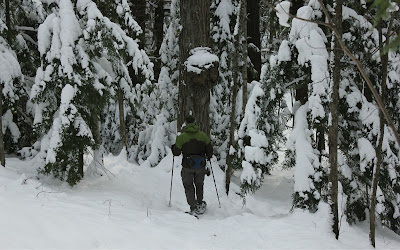Wind and waves are constantly shaping the outer banks of North Carolina. We stayed in a beach house on the ocean (
literally on the ocean, depending on the tide). The first few days a nor'easter was blowing hard and churning the ocean mightily. Later in the week, the sea was a little calmer.
We enjoyed a couple of afternoons of paddling at the
Pea Island National Wildlife Refuge where we collected some fresh shellfish for dinner (mussels, clams, and oysters). The refuge was also a great place to see pelicans, terns, sandpipers, and other wading birds. It's much easier to paddle at mid- to high tide, than at low tide!!

As we attempted to paddle (against a strong current) from the sound out to the ocean at New Inlet, we saw about a dozen large Horseshoe Crabs coming ashore to spawn. More closely related to spiders than crabs, Horseshoe Crabs have been around for some 300 million years and lived 100 million years before the dinosaurs. The males were hitching a ride with the larger females, who would burrow a nest into the sand to lay 90,000 eggs. Apparently, less than 10 of those eggs per nest are expected to survive into adulthood. During a 3-week window in the spring, about 11 species of migratory shorebirds en route from South America to the Arctic are dependent on the Horseshoe Crab for survival, consuming eggs from nests disturbed by storms and waves.

The Gulf Stream mixing with the Labrador current creates strong storms and sea swells, which is why this area is called the "Graveyard of the Atlantic." We visited 2 of the 4 lighthouses of coastal North Carolina. The Bodie Island lighthouse (right below) was closed for renovation, but we climbed to the top of the Cape Hatteras lighthouse (left below), the tallest lighthouse in America. We had planned to take the ferry to Ocracoke, but the effects of Hurricane Irene have made this an unreliable trip, so we opted out of venturing further south.
We also visited the
Wright Brothers National Memorial, site of the world's first airplane flight in 1903, and the remnants of
Fort Raleigh, which is the site of the 1584 "Lost Colony of Roanoke" and the first English child born in the New World, Virginia Dare.
Although local politics was in full crazy mode (open hostility toward
reasonable new rules by the National Park Service for Off Road Vehicles and adoption of an anti-gay amendment to the state constitution), this visit was both exhilarating and relaxing. Since it was still off-season, the road and beaches were not at all crowded (the spit is so narrow, so there's only one road). Enjoy this video postcard from the outer banks of coastal North Carolina.








































